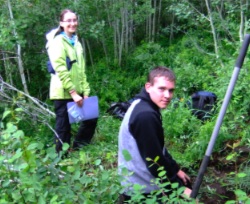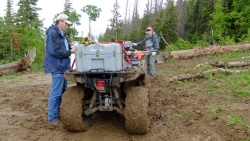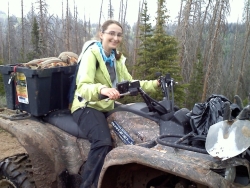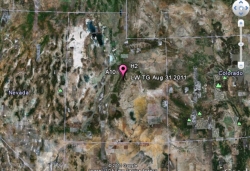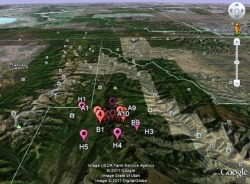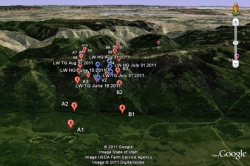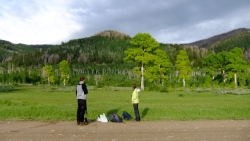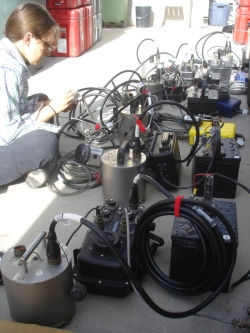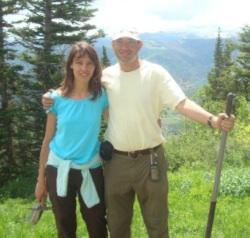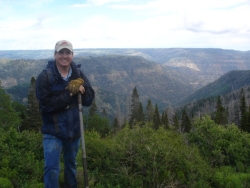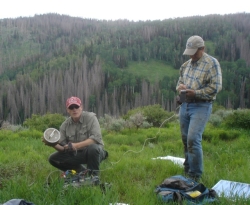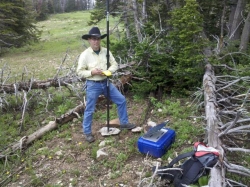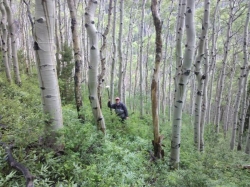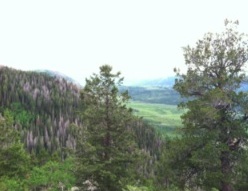IRIS/PASSCAL Intern Cuts Her Teeth on TESGM Project Fieldwork
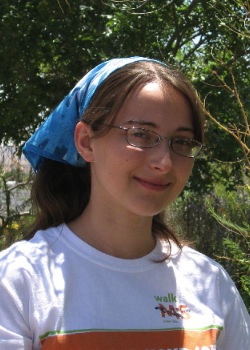
IRIS/PASSCAL summer intern Jennifer Tarnowski is learning the ropes of a seismology career by working at the PASSCAL Instrument Center at New Mexico Tech, and also by participating with hands-on efforts in the field. Jennifer recently participated in fieldwork supporting the Topographic Effects in Strong Ground Motion project (TESGM, PASSCAL project 201109) in early July, along with principal investigators Brady Cox, University of Arkansas, Adrian Rodriguez-Marek, Virginia Tech., graduate student Clinton Wood, University of Arkansas, Robert Kent of the Network for Earthquake Engineering Simulation (NEES), and Steve Azevedo, IRIS/PASSCAL.
The project concerns topographic effects in strong ground motion, a well-documented phenomenon. These effects involve the modification and amplification of seismic ground motion in the vicinity of topographic features such as hillsides, ridges, and canyons. The TESGM study will be focused on how to quantify these effects, and incorporate them into design codes. The field area was chosen as representative of a mountainous region with frequent and predictable coal mining-induced seismicity. It was instrumented with a locally-dense instrumentation array to capture potential topographic effects associated with ground motions in full-scale, natural features.
Here are some of Jennifer's observations about the experience, along with pictures from the deployment. Click on any image to view a larger version.
What was Jennifer's overall impression of the deployment?
"All around, it was a great group of people to work with. Nothing brings people together like rain, mud, and hours of hiking through gorgeous scenery, albeit with shovels and trash bags."
| Attachment | Date | Size |
|---|---|---|
| 07/14/11 3:24 pm | 5.82 KB |
- Home
- General Information
- Instrumentation
- Dataloggers
- Sensors
- All-In-One Systems
- Power Systems
- Field Procedures
- Controlled Sources
- Seismic Source Facility
- Magnetotelluric Systems at PASSCAL
- Ground Penetrating Radar
- Power and Memory Calculations Form
- Data Archiving
- Apply for a PI Account
- Experiment Scheduling
- Polar
- Important Hardware/Software Notes
- USArray
- Software
Also See
- SEIS-UK joins IRIS/PASSCAL on Support Effort for Antarctic Projects
- Freshman Senator Visits IRIS/PASSCAL
- P.I. Transition coming to the IRIS/PASSCAL Instrument Center
- IRIS/PASSCAL Instrument Center User Workshop, AGU San Francisco - 2010
- IRIS/PASSCAL Dedicates Seismometer Testing Observatory to Jim Fowler

